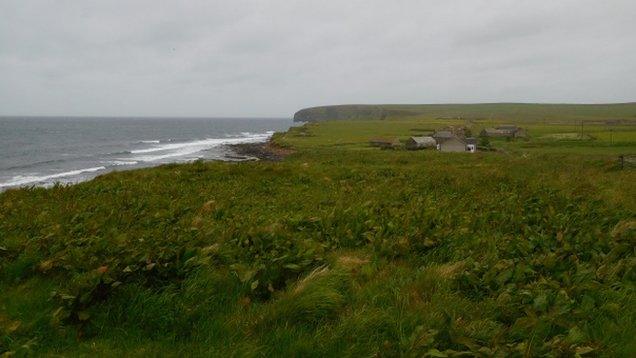Fossilised dung clue to secret lives of 'pets' in Iron Age
- Published
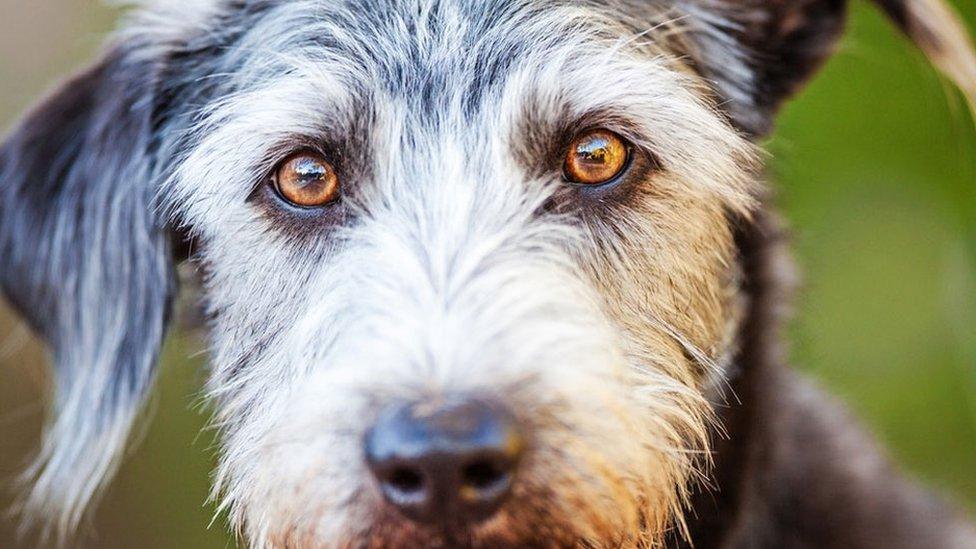
The coprolites could be the faeces of dogs that helped to control vermin at the Iron Age roundhouse
Fossilised dung unearthed at an Iron Age broch could provide interesting information on the diets of animals and humans that once lived at the site.
Archaeologists believe the faeces were left by dogs or cats that helped to control vermin towards the end of occupation of the roundhouse on Orkney.
The coprolites, fossilised faeces, is thought to be about 2,000 years old.
Examinations of the dung could reveal what kinds of scrap foods the animals were thrown by the broch's residents.
The coprolites are among several interesting finds made at The Cairns on South Ronaldsay.
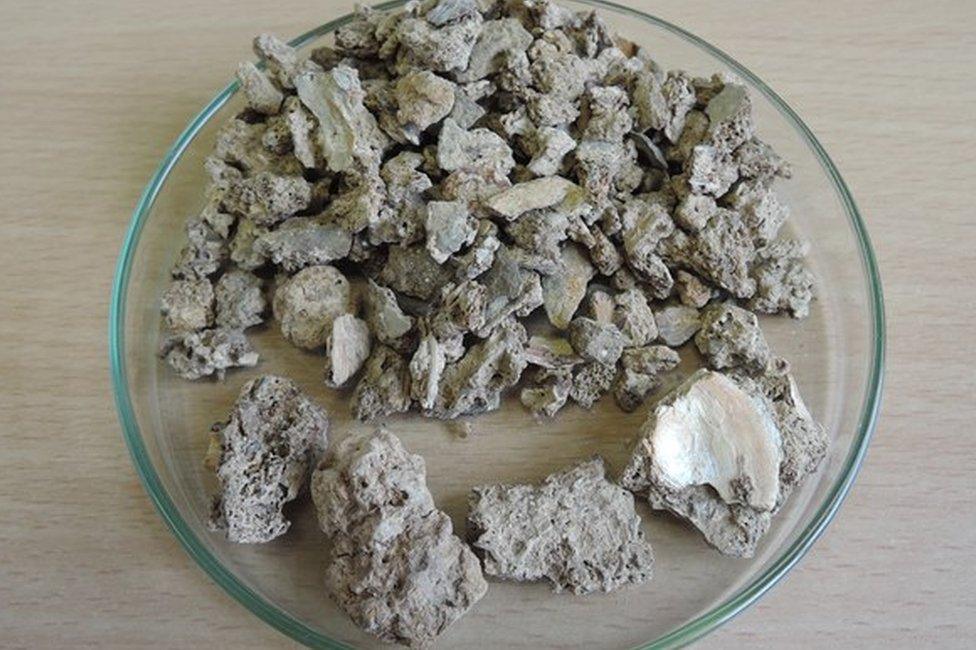
Samples of the coprolite unearthed at South Ronaldsay

The Cairns Project site in South Ronaldsay
Other discoveries have included a human lower jaw bone and teeth.
The University of the Highlands and Islands is working on The Cairns Project along with others, including the organisation Orkneyjar.
Scraps from humans
Site director Martin Carruthers said the coprolites were not the most photogenic of the discoveries, but added that they were still an important find.
He said: "They tend to lose their integrity quite easily when they're just a couple of thousand years old rather than petrified as stony fossils if they're a great deal older.
"These are probably from medium-sized mammals like a cat or dog and their significance is two-fold.
"They tell us something of the conditions prevailing inside the broch during its use, at least towards the end of its use, in that there were animals probably feeding off the waste products of human food, as well as probably keeping numbers of vermin lower as well.
"The other useful thing about these coprolites is that their contents may well give good additional proxy information on the foodstuffs present in the broch as these animals will probably be eating scraps from the human diet."
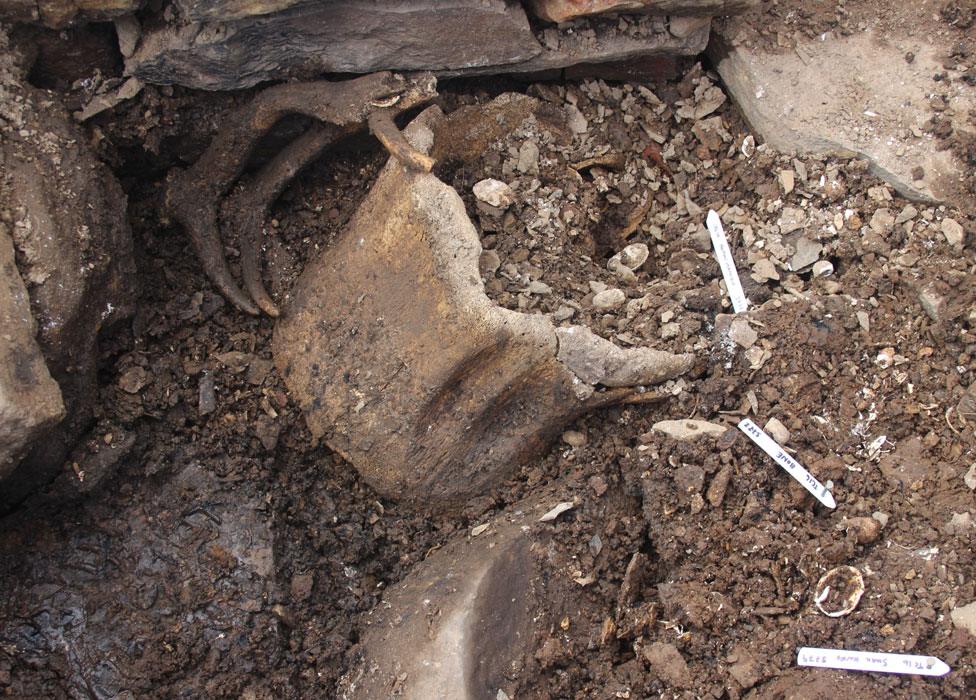
Whale and other animal bones have already been found at the site
- Published7 July 2016
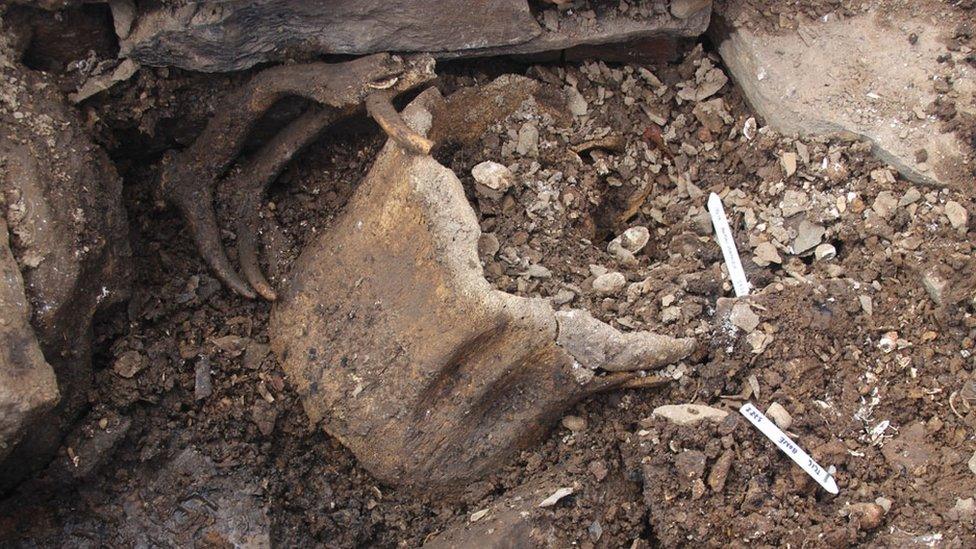
- Published6 July 2016
